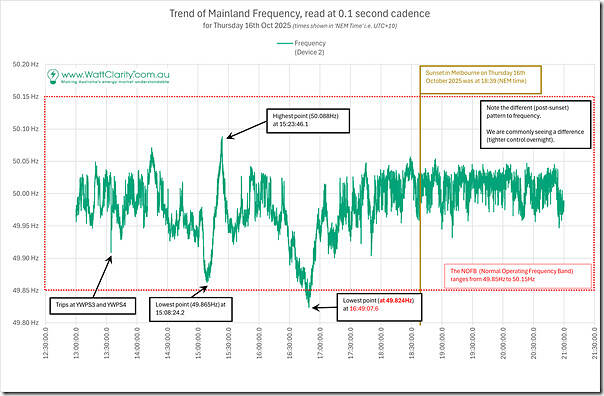There’s already been a handful of articles relating to Thursday 16th October 2025. Particularly relevant here:
- We wrote about the ‘Simultaneous trips at YWPS3 and YWPS4 on Thursday 16th October 2025’; and
- Briefly looked at ‘System frequency during simultaneous trips at YWPS3 and YWPS4 on Thursday 16th October 2025’.
But it turns out that the trips of YWPS3 and YWPS4 were not the primary drivers of the worst periods of frequency performance across the day.
Instead, as the following 8-hour trend puts in context with the larger frequency disruptions, they looks more like the typical pattern caused by challenges in forecasting/dispatching VRE later in the day:
As time permits, we’ll look in more detail …



Leave a comment